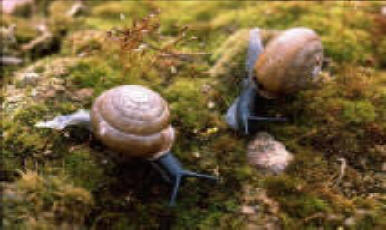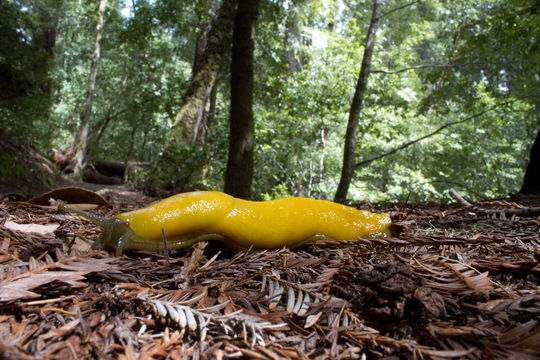
Classification
Domain: Eukarya
Kingdom: Animalia
Phylum: Mollusca
Class: Gastropoda
Order: Stylommatophora
Family: Polygyridae
Genus: Mesodon
Species: Mesodon elevatus (Say, 1821)

Domain: Eukarya
(Encyclopedia of Life, 2012)
Eukarya is one of the three domains of cellular life. What
separates them from the rest is the complexity of each organism listed
under Eukarya and different structures they
all have developed into (Encyclopedia of Life, 2012).
Kingdom: Animalia (Encyclopedia of Life, 2012)
Animalia is represented by over 1.5 million
different species. All the organisms in this kingdom are
multicellular, yet they are not to be confused with other
multicellular groups like plants and fungi. What makes Animalia different from the others is the fact that they are
heterotrophic and can reproduce sexually or asexually
(Encyclopedia of Life, 2012).
Phylum: Mollusca (Encyclopedia of Life, 2012)
Mollusca have a variety of different species.
They contain the second most species among the Phyla,
estimating to have almost 100,000 different species, only behind
arthropods. As for their location, mollusks can be found in
virtually all regions around the globe, in all different environments. What makes
mollusks unique from any other phyla is a variety of
distinguishable characteristics. The first one is each organism
has a hard external shell made up of calcium carbonate, with
some exception of organisms like the slugs or squids
(Burach,
1962). Next is having a
gland inside the mantle, these different glands are meant to
shape the shell structures and act like a “house” for the lungs
and heart. Finally, the last notable characteristic is having an
adapted foot used for movement or capturing prey. As for nutrition, mollusks feed on what ever they come contact
with, this includes things like fish and plants to even paper
(Burach,
1962).
capturing prey. As for nutrition, mollusks feed on what ever they come contact
with, this includes things like fish and plants to even paper
(Burach,
1962).
Class: Gastropoda (Encyclopedia of Life, 2012)
Gastropods are the largest group within Mollusca phylum. This
class includes over 40,000 species of the snail and can also be located
in all different locations. Just like mollusks, gastropods range from fresh and marine waters to
terrestrials. As for the shell type of gastropods, there
are two main shells they usually have. The first type is a
single shell that has a spiral coil, whereas the second type has
such a reduced shell, it seems that they don’t even exist
(Burach, 1962).
Each organism within this class has developed something called
torsion. This happens in the early stages when the visceral mass
(digestive trap) is twisted around by 180 degrees inside the
body cavity making it so that the anus appears to be right next
to the mouth on the posterior half of the organism. Most
gastropods are herbivores, getting their nutrition by scraping
different types of algae or fungi using the radula
(Gillis, 2011).
Order: Stylommatophora (Encyclopedia of Life, 2012)
Stylommatophora (or Geophila) are known for having two large
tentacles that contain the eyes near the tips. What makes these
tentacles even more unique is that they are both are able to
retract back into the shell or near the body when they come
across a threat or for defense (Burach, 1962).
Family: Polygyridae (Encyclopedia of Life, 2012)
Polygyridae can be easily distinguishable by the lip it
has on the shell. If the snail is mature, this lip
becomes very visible, yet if the snail is at a younger years and
is immature, the lips may not be developed yet, making it hard
to tell if the snail is in the family Polygyridae or not. As
for the habitat of these organisms, they array from very cold
climates like Alaska to the tropics of the south
(Burach,
1962). Just like gastropods, Polygyridae get their
nutrition using radula to scarp off parts of young plants
(Auffenberg
et al. 1989).
Genus: Mesodon (Encyclopedia of Life, 2012)
Mesodons all continue to have the lip on each shell. Each
one has a somewhere between five and seven whorls on the pale
shell they have. As for location, they can be found from low wet
lands to dry bluffs. Each species within this genus has been
able to find a way to adapt to there own environment
(Dourson, 2010).
Species: Mesodon elevatus (Say, 1821)
(Encyclopedia of Life, 2012)
Mesodon elevatus are located in selected types of
environments including Limestone Rivers, caves and mixed
forests. They can be notable for having 6-7 whorls in each
shell. As for the color, at an immature age, Mesodon
elevatus lean towards having a clear green color; however, when
they mature and grow older, their shell color becomes a pale
yellow (Dourson, 2010).